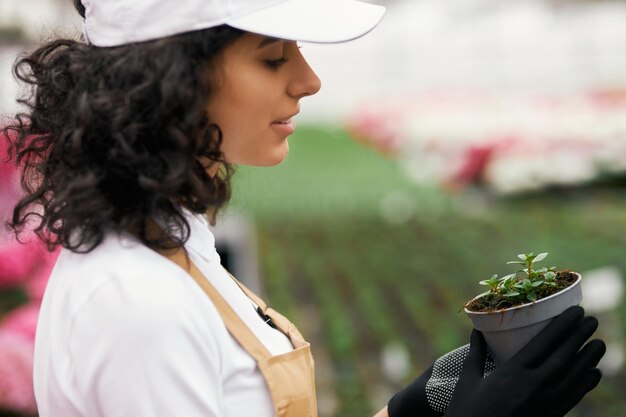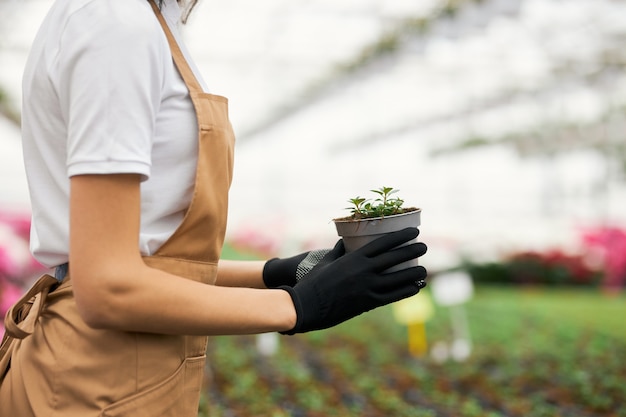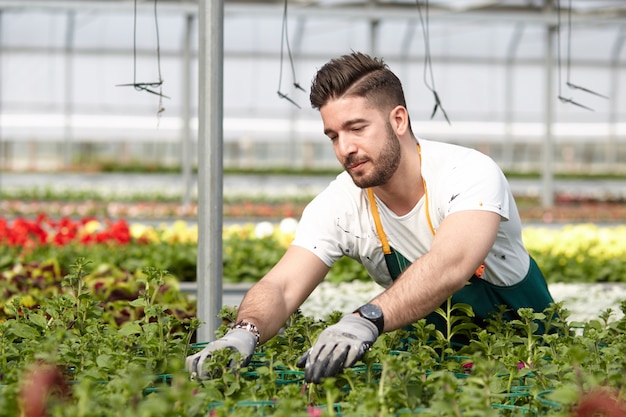Hi, I’m Sophie! Gardening has been one of my passions for years, and over time, I’ve learned that there’s a big difference between casual gardening and professional planting. When you get into the world of professional planting, you start focusing not only on keeping plants alive but also on making your garden thrive, look stunning, and even improve the health of your local environment.
In this guide, I’ll share some tried-and-true professional planting tips to help you take your garden to the next level. Whether you’re looking to create a vibrant flower bed or design a vegetable garden that’ll give you produce year-round, these tips will make all the difference. So, let’s dive in and turn your garden into the lush, professional oasis you’ve dreamed of!
1. Start with a Thoughtful Plan

Every beautiful garden starts with a thoughtful plan. When you’re approaching planting from a professional perspective, you’ll want to think about the layout, the types of plants, and the overall theme of your space. Take some time to consider the climate, soil type, and amount of sunlight your garden receives, as this will guide your plant choices and layout.
Here’s how to create a strong foundation for your garden:
- Map out your garden space – Include sun and shade areas, and note any wind exposure.
- Research plant options – Find plants suited to your region’s climate, which are more likely to flourish without needing constant care.
- Consider a mix of heights, colours, and textures – This creates a more visually interesting garden with depth and variety.
In my own garden, planning ahead helped me avoid crowding plants or planting sun-loving varieties in shaded spots, which I learned the hard way with a few wilted daisies!
2. Focus on Soil Health – The Foundation of Professional Planting
Soil health is the secret weapon behind every thriving garden. In professional planting, the importance of good soil can’t be overstated. Healthy soil provides nutrients, retains water, and supports root growth, which in turn helps plants resist disease and pests.
Soil health basics for beginners:
- Start with a soil test – This will tell you about nutrient levels and pH. You can buy a simple test kit online or at a local nursery.
- Add organic matter – Compost and aged manure are excellent ways to enrich the soil and improve its structure.
- Use mulch – Organic mulch (like bark or leaf mulch) helps retain moisture, keeps weeds at bay, and eventually breaks down to improve soil quality.
When I began focusing on my soil, I noticed a big difference in my plants’ growth and resilience. Healthy soil is a huge part of professional planting, and it’s well worth the effort.
3. Choose Native Plants for Long-Term Success
If there’s one professional planting tip I swear by, it’s to include native plants. Native plants adapt to the local environment, making them more resilient and less maintenance. They’ll also attract native pollinators like bees, butterflies, and birds, which support the entire garden ecosystem.
Why native plants are a win-win:
- They’re generally harder and less prone to disease.
- Native plants often require less water, which is especially helpful in dry regions.
- They support local wildlife, creating a more biodiverse and balanced garden.
Since adding more native plants to my garden, I’ve had fewer issues with pests and diseases, and my garden has become a little haven for pollinators. If you’re serious about creating a professional-quality garden, start researching your local native plants.
4. Use Companion Planting Techniques
Companion planting is a technique often used in professional planting that involves growing certain plants together to enhance growth, deter pests, or improve flavour. For example, marigolds planted near tomatoes can help keep aphids and other pests at bay, while basil enhances the flavour of tomatoes.
Simple companion planting combinations to try:
- Tomatoes and basil – Basil repels pests and enhances tomato flavour.
- Carrots and onions – Onions deter carrot flies, and carrots break up soil for onions.
- Corn, beans, and squash – Known as the “Three Sisters,” these plants support each other and thrive when grown together.
Companion planting has saved me a lot of time and energy in pest control, and it’s a smart, natural way to boost plant health and productivity.
5. Invest in Proper Spacing and Pruning
A common mistake among beginner gardeners is planting too close together. Professional planting involves proper spacing and regular pruning to allow for airflow, sunlight, and growth. Crowded plants compete for nutrients, attract pests, and are more susceptible to diseases like mildew.
How to space and prune like a pro:
- Check plant tags or labels – They usually provide recommended spacing, which is key for growth.
- Prune regularly – This keeps plants healthy by removing dead or diseased branches and encourages fresh growth.
- Thin overcrowded plants – This helps reduce competition for nutrients and improves the overall garden aesthetic.
When I started giving my plants more space and pruning them regularly, I noticed healthier, bushier growth and fewer pest problems. It’s a small change that makes a huge difference.
6. Water Wisely for Efficient Growth
Watering might seem straightforward, but professional planting requires a more thoughtful approach to keep plants thriving. Overwatering is a common issue, as it can lead to root rot and other problems. At the same time, under-watering can stress plants and stunt growth.
Best practices for watering your garden:
- Water deeply and less often – Deep watering encourages roots to grow down rather than staying at the surface.
- Use drip irrigation or a soaker hose – These methods are water-efficient and deliver moisture directly to the roots.
- Water in the morning – This gives plants time to absorb moisture before the heat of the day and reduces the risk of fungal growth.
After switching to morning watering and using a soaker hose, I noticed healthier plants with stronger roots and fewer issues with mildew. Watering is essential, and these small adjustments make it far more effective.
7. Embrace a Seasonal Planting Routine
One of the best professional planting habits to develop is to plant according to the seasons. Seasonal planting ensures that you’re growing plants at their ideal time, reducing the extra care they need and improving their overall health and yield.
How to set up a seasonal planting schedule:
- Plan your garden layout each season – Think about which plants to remove, rotate, or add as the weather changes.
- Opt for seasonal vegetables and flowers – In autumn, for example, focus on root vegetables and leafy greens that thrive in cooler weather.
- Consider succession planting – Planting crops in stages so that as one crop finishes, another can take its place. This keeps your garden productive year-round.
Sticking to a seasonal schedule has made my garden much more resilient and productive. Plus, it’s exciting to watch the garden transform throughout the year.
Frequently Asked Questions about Professional Planting
1. How do I know which plants will work in my garden?
Start by considering your climate, soil type, and available sunlight. Visit local nurseries for guidance on which plants are best suited to your area, and always check plant tags for specific care instructions.
2. How often should I fertilise my plants?
It depends on the plant type and soil condition. Vegetables and flowers benefit from fertiliser every 4-6 weeks, but native plants usually need less. Always follow the recommended dosage to avoid overfertilizing.
3. Can professional planting techniques be used in small spaces?
Absolutely! These techniques can be applied to gardens of any size, from small balconies to sprawling yards. The same principles of soil health, proper watering, and seasonal planting apply whether you have a tiny herb garden or a large flower bed.
Ready to Get Started on Your Professional Planting Journey?

If you’re eager to elevate your gardening skills, professional planting techniques will bring your garden to a whole new level. With thoughtful planning, regular care, and the right plants, you can create a garden that looks beautiful and thrives season after season.
Have any questions, or is there a specific planting tip you’ve found helpful? I’d love to hear your experiences and share more tips in the comments below! If you find this guide helpful, feel free to share it with other garden enthusiasts. Here’s to a vibrant, flourishing garden and the joy of watching your hard work bloom!

